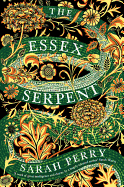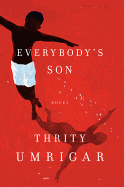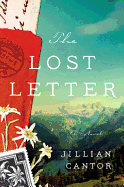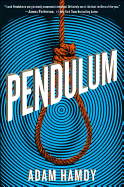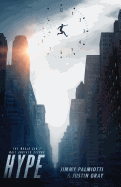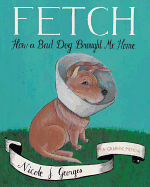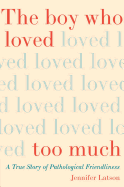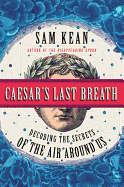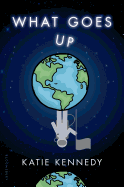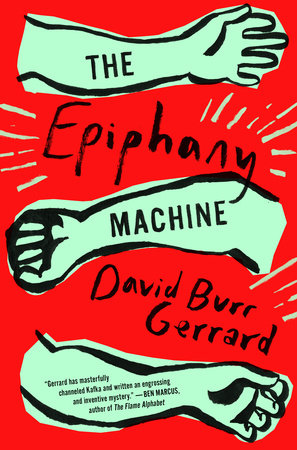 David Burr Gerrard received his MFA in fiction from Columbia University and teaches creative writing at the New School in New York City. The Epiphany Machine (just published by Putnam), his second novel, is an alternative history of New York City, set from the 1960s to the near future, in which a tattoo machine predicts the future with irrevocable consequences. Here's an excerpt:
David Burr Gerrard received his MFA in fiction from Columbia University and teaches creative writing at the New School in New York City. The Epiphany Machine (just published by Putnam), his second novel, is an alternative history of New York City, set from the 1960s to the near future, in which a tattoo machine predicts the future with irrevocable consequences. Here's an excerpt:
The first time I asked my father about the epiphany machine was also the only time that he hit me. What made an impression on me was not the actual physical contact, a gentle slap only slightly more abrasive than the wind that was blowing very hard for an October day. My father seemed no more likely to slap me than to slit my throat and watch me bleed out into the leaf-clogged gutter, so for all I knew that might come next. In my young mind, for him to have hit me at all meant that something must have been unlocked in him, something that would have remained boxed up had I not liberated it with the magic words "the epiphany machine," and that would now never cease to pursue me until it had achieved my destruction.
He knelt down and looked me in the eye. "You have no idea how much I've gone through to protect you from that horrible thing."
This made me sob.
"If you're old enough to know about the epiphany machine, then you're too old to cry."
This only made me sob harder.
"Venter, you need to tell me who told you about the machine. Was it your grandmother? She promised me she wouldn't say anything about it until we both agreed that you were old enough."
"It wasn't her. I just heard about it on TV."
This was not technically a lie. One night, after I was supposed to be asleep, I had heard my grandmother weeping while watching an eleven-o'clock news report suggesting that the epiphany machine might be responsible for the spread of HIV, another thing I had never heard of. I connected this to the time when my father had made an excessively big show of not freaking out over the cover of a copy of a magazine that had been left on the table at a coffee shop: "Did a Tiny Cult in New York City Help Spread HIV?" But these events had happened weeks earlier--which might as well have been decades according to my sense of time--and were not why I had asked about the device. I had asked because, at recess that morning, I had heard one teacher whisper to another as I passed by, "His mother got a tattoo from the epiphany machine." Now I wanted to know what it was. I was also wondering whether the epiphany machine had something to do with the tattoo on my father's forearm--SHOULD NEVER BECOME A FATHER--that he had sat me down to talk about shortly before I was old enough to read it, claiming he had gotten it as a stupid prank when he was very young, long before I was born.
"On TV!" my father said, laughing. "My brilliant boy, I'm sorry I slapped you. Let's take a walk." We walked past the crematorium across from our house to the cemetery two blocks away. (Queens was and remains a city of the dead with some half-hearted gentrification from the living.) The wind continued as we maintained silence for several rows of what my father and grandmother called "nails on a sum," aping what they said had been my attempt, at the age of three, to say that gravestones looked like thumbnails. I got myself together and stopped crying, but then I suddenly realized that my father must be taking me to see my mother's grave--that this was how he was going to tell me that my mother was dead, and had not merely run away. I started sobbing again. This time my father did not scold me, but he did not comfort me either. He just looked out at the traffic. Finally, he spoke.
"Do you know why your grandmother and I think that 'nails on a sum' is funny?"
"Because it's silly?"
"Because it's not silly. Because it's actually exactly correct. They've told you in school what a sum is, right?"
"That's in adding."
"Exactly. Can you give me an example of a sum?"
"In two plus two equals four, the sum is four."
"Good, my brilliant boy!"
This made me feel very, very good, as the fact that I hated him at the moment did not make me long any less for him to think that I was a genius.
"The sum is what things add up to," my father continued. "Everyone wants his or her life to add up to something. All the people in this cemetery, all the people that we're walking on, they all did lots of stuff, hoping to make the sums of their lives go higher and higher and higher. Maybe a few of them had sums that were very high, most of them had sums that were not so high. In every case, the gravestone is like a nail on that sum--not like the nail on your thumb, actually, but like the nails in a roof, the nails that say: no, house, you're not going any higher. Gravestones are like nails on a person's life, keeping the sum from getting any higher."
Often, he couldn't tell exactly at which level to speak to me, and so said things that made no sense on any level.
"I don't understand," I said.
"Okay. In a baseball game, there's a score, right? At the end of the game, each team has gotten a certain number of runs. The sum that I'm talking about in a person's life, that's like a score."
Something was stirring in me, a mature and morally serious version of the most childish emotion of all: impatience.
"Dad," I said. "What is the epiphany machine and where is my mother?"
"I'm getting to that," he said. "So the sum of one's life is the sum of everything you've done. And as you get a little older you start to realize that sooner or later you're going to end up here, in this cemetery or one exactly like it, and you want to make sure that your sum is as high as possible. The problem is that life is more confusing than a baseball game. In a baseball game, a run is a run and that's that. In life, sometimes you're not sure what counts as a run. Also, you don't know what the teams are. Or whether you're even playing. Sometimes you think you're playing and you're actually just sitting in the stands, watching other people play."
"Dad."
"Okay. All this means that you have to make up your own way of scoring. You have to decide what's important. For a lot of people, it's money. For a lot of other people, it's some kind of religious fulfillment. You know what the most important thing is to me?"
I shook my head. I knew what he was going to say, but I wanted to hear him say it.
"You are the most important thing to me. So whenever something good happens to you, or whenever I see you smile, or whenever you learn how to do something, that's like a run for me. When something bad happens to you, that's like a run for the other team. That's why I had to do what I did just now. Even though I didn't really hit you--it was really just a love tap, wasn't it?--I still felt horrible while I was doing it. I felt much worse than you felt, believe me. But the epiphany machine is very bad and I have to do whatever it takes to keep you safe from it. It's the sort of thing that could cause you to lose the whole game."
"What?"
"I'm saying that figuring out what's important in life and how to go about getting it is very difficult. Sometimes you get confused and you get tempted to just let other people make the rules. And some people are really happy to make the rules for other people. Adam Lyons, the man who runs the epiphany machine, is one of those people. There was a time when I let myself get confused enough that I let him write those words on me that you know aren't true."
"The epiphany machine writes things about people on their arms?"
"Exactly, my brilliant boy! I figured out that the machine was wrong. Your mother, on the other hand... well, Venter, it told her that she ABANDONS WHAT MATTERS MOST. You weren't born yet so she didn't know what matters most. Then you were born and she abandoned you."
"Why did she listen to the machine if you didn't?"
"That's the first question you should ask her if you meet her."
"I don't ever want to meet her."
"That shows that you are a very smart boy."
If I had actually been a very smart boy, I probably would have kept asking questions. At the very least I would have recognized his persistent flattery as a shutting-down of my curiosity no less violent than the slap. But I wanted his praise more than I wanted the truth.
Excerpt: The Epiphany Machine
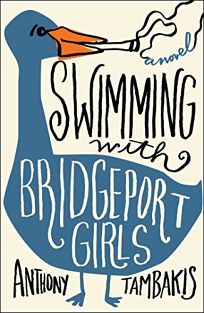 Swimming with Bridgeport Girls begins on the cusp of July 4th, and Ray Parisi is on a precipitous losing streak. Divorced from the woman he still loves, he's also lost his ESPN job, owes his bookie $52,000 and has maxed out his last credit cart "on a cash advance that led to a disaster at the blackjack table," which devolved into a brawl, a broken wrist and Ray's banishment from the Mohegan Sun casino. Then there's the unfortunate incident at Belmont Park with a losing jockey.
Swimming with Bridgeport Girls begins on the cusp of July 4th, and Ray Parisi is on a precipitous losing streak. Divorced from the woman he still loves, he's also lost his ESPN job, owes his bookie $52,000 and has maxed out his last credit cart "on a cash advance that led to a disaster at the blackjack table," which devolved into a brawl, a broken wrist and Ray's banishment from the Mohegan Sun casino. Then there's the unfortunate incident at Belmont Park with a losing jockey.


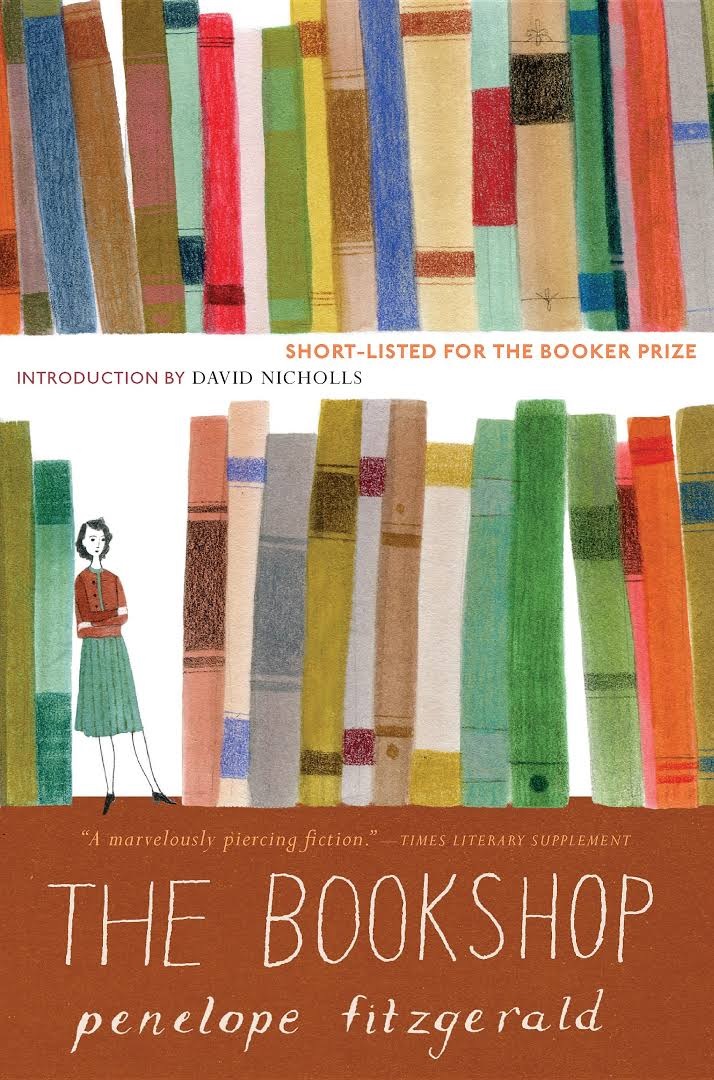 English author Penelope Fitzgerald (1916-2000) didn't begin her writing career until age 58, when she published a biography of 19th-century painter Edward Burne-Jones. Her life to that point was one of promise turned to hardship. Her husband, Desmond Fitzgerald, put his legal studies on hold to fight in North Africa during World War II. He returned with a Military Cross and alcoholism. The Fitzgeralds briefly co-edited a literary magazine called the World Review before Desmond was disbarred for forging checks and cashing them at pubs. The family, now with children, faced poverty, homelessness, many years in public housing, and even lived on a houseboat that sank twice. Penelope worked various jobs to keep them afloat, mostly as a teacher, though briefly as a bookseller. She published her first novel in 1977, a comic mystery about the 1972 King Tut exhibit at the British Museum called The Golden Child. Penelope initially wrote it to comfort her terminally ill husband, who died in 1976.
English author Penelope Fitzgerald (1916-2000) didn't begin her writing career until age 58, when she published a biography of 19th-century painter Edward Burne-Jones. Her life to that point was one of promise turned to hardship. Her husband, Desmond Fitzgerald, put his legal studies on hold to fight in North Africa during World War II. He returned with a Military Cross and alcoholism. The Fitzgeralds briefly co-edited a literary magazine called the World Review before Desmond was disbarred for forging checks and cashing them at pubs. The family, now with children, faced poverty, homelessness, many years in public housing, and even lived on a houseboat that sank twice. Penelope worked various jobs to keep them afloat, mostly as a teacher, though briefly as a bookseller. She published her first novel in 1977, a comic mystery about the 1972 King Tut exhibit at the British Museum called The Golden Child. Penelope initially wrote it to comfort her terminally ill husband, who died in 1976. David Burr Gerrard
David Burr Gerrard